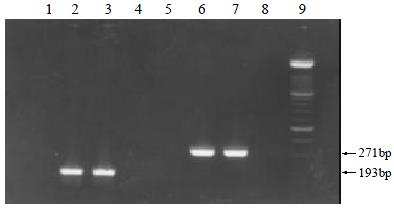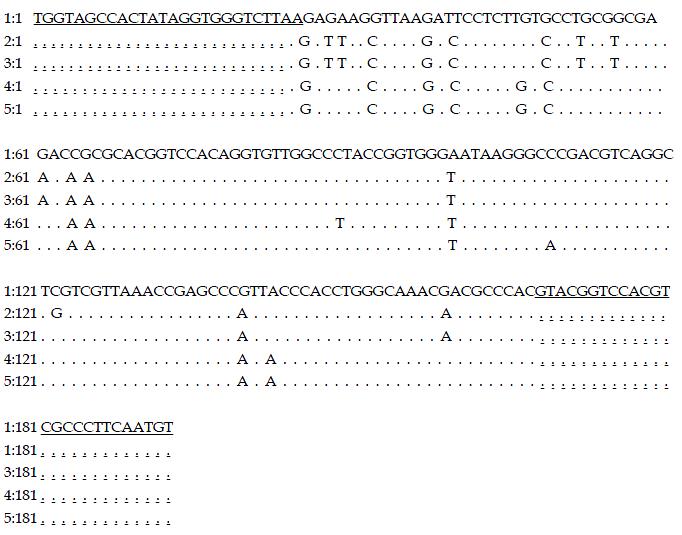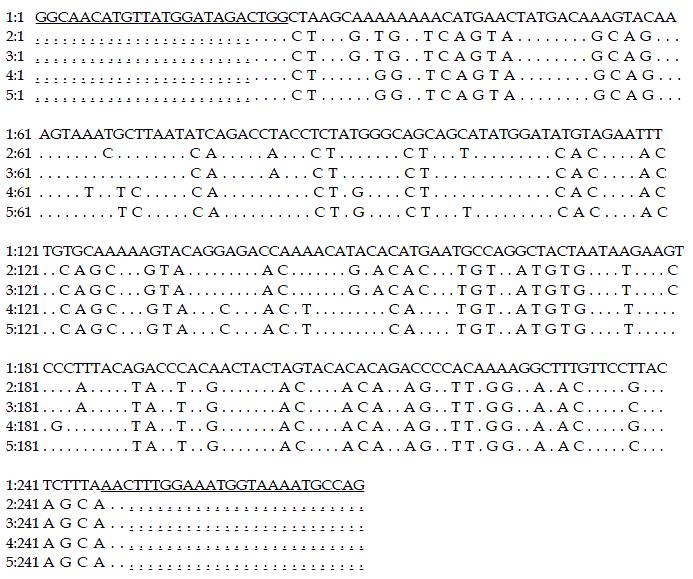Copyright
©The Author(s) 2002.
World J Gastroenterol. Oct 15, 2002; 8(5): 857-862
Published online Oct 15, 2002. doi: 10.3748/wjg.v8.i5.857
Published online Oct 15, 2002. doi: 10.3748/wjg.v8.i5.857
Figure 1 Target fragments respectively amplified from HGV RNA and TTV DNA in serum and saliva samples.
(1: HGV negative serum sample; 2 and 3: HGV positive serum sample and saliva sample (No.: 010906); 4: blank control for HGV detection; 5: TTV negative serum sample; 6 and 7: TTV positive serum sample and saliva sample (No.: 011022); 8: blank control for TTV detection; 9: marker)
Figure 2 Homology of the nucleotide sequences from HGV RT-nested PCR products of the 2 serum and 2 saliva samples from 2 patients compared with the reported sequence.
(1: The reported HGV sequence[14]; 2 and 3: the sequences of HGV RT-nested PCR products from the serum sample and saliva sample from the patient (No.: 010906); 4 and 5: the sequences of HGV RT-nested PCR products from the serum sample and saliva sample from the patient (No.: 011022). Underlined areas indicate the primer positions.
Figure 3 Homology of the nucleotide sequences from TTV semi-nested PCR products of the 2 serum and 2 saliva samples from 2 patients compared with the reported sequence.
(1: The reported TTV sequence[57]; 2 and 3: the sequences of TTV semi-nested PCR products from the serum sample and saliva sample from the patient (No.: 010906); 4 and 5: the sequences of TTV semi-nested PCR products from the serum sample and saliva sample from the patient (No.: 011022). Underlined areas indicate the primer positions.
- Citation: Yan J, Chen LL, Lou YL, Zhong XZ. Investigation of HGV and TTV infection in sera and saliva from non-hepatitis patients with oral diseases. World J Gastroenterol 2002; 8(5): 857-862
- URL: https://www.wjgnet.com/1007-9327/full/v8/i5/857.htm
- DOI: https://dx.doi.org/10.3748/wjg.v8.i5.857











